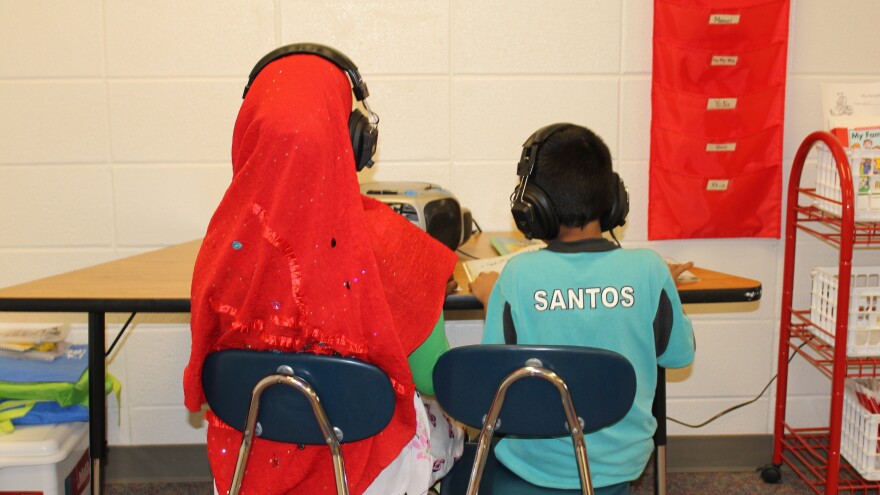Meatpacking plants used to be located in urban centers like Kansas City and Chicago. Over the past few decades, many plants have moved to rural Midwestern towns, which have seen a huge influx of immigrants as a result. Yesterday, , which has struggled to help assimilate the newcomers who work at a large poultry plant. Today, we have this report from Garden City, Kan., a meatpacking town that embraces its new cultures.
The chemistry lab at Garden City Community College is buzzing, and Binh Hua and My Nguyen are at the front of the class. The two young women wear protective goggles, their long black hair pulled into ponytails, as they wait for the professor to bring the class to order.
Both of these Vietnamese 18-year-olds have benefited from the beef industry since their parents moved here to work in the huge Tyson Foods plant. Now they dream of computer and medical degrees as their parents do the hard work of turning animals into beef at a slaughterhouse on the outskirts of town. Both students graduated from high school in just three years, and they're trying to earn associate degrees by next year.
"We really like to graduate early because we think high school wasn't challenging enough and we were looking for challenging courses and stuff," Hua says.
"And we get a head start in college," Nguyen adds.
Hua and Nguyen represent the newest chapter in an age-old American story: Immigrants have always worked in the meatpacking plants, lured by steady — if hard — work. Since 1980, when the first slaughterhouse was built in Garden City, Kan., the newcomers have doubled the population to roughly 30,000 and turned a white cow town into a cultural crossroads where minorities are now the majority. But Garden City's response differed from many in the rural Midwestern towns: City leaders decided early on that they would embrace these newcomers.
"The vision was: We have these people here; are we going to accept them as a blessing or are we going to consider them a curse?" asks Levita Rohlman, who was part of a faith-based group that helped usher in Garden City's new wave of immigrants.
Joining many Mexican-Americans here in the early 1980s were Vietnamese and other Southeast Asians. And then came immigrants from South America. Now it's Somali and Burmese refugees who are settling.
Abdifatah Abdullahi is a 25-year-old Somali who landed in Garden City almost a year ago. He works the second shift at Tyson, is a part-time Somali translator at the local refugee center and attends college. Abdullahi says it should be obvious why he came here: "To look for a better life and to look for a better education. That's what I come to look for here."

What he and others found was a large network of social services: food banks, shelters, English classes and job assistance.
Take one of Garden City's "newcomer" classes, located at a local elementary school. In this class, kids are temporarily separated from the rest of the school so they can try to assimilate into their new surroundings. Many were born in refugee camps and have never seen basic plumbing, let alone a pencil. And some of them are simply hungry. The starting pay at the Garden City Tyson plant is $13.50 an hour, but it's difficult to support a family on that. Three-quarters of the students get free or reduced-price lunch, and requests for food stamps are up 230 percent in just the past five years.
Garden City's refugee and immigrant population is expected to grow, as Tyson continues recruiting more workers. And those who arrive here will get lots of help and a hand up toward a better life.
Back at the chemistry lab, Binh Hua says that she's doing OK in the class and that she doesn't leave the library until it closes every night at 10 p.m. Even then, she still gets home before her parents, who work the late shift at the Tyson plant, her father on the hot, bloody kill floor, her tiny mother using a razor-sharp knife to cut the hulks of beef.
"My mom and dad just always said, 'I'm doing this for you,' " Hua says.
Copyright 2020 NPR. To see more, visit https://www.npr.org. 9(MDAxNDQ2NDAxMDEyNzU2NzM2ODA3ZGI1ZA001))




